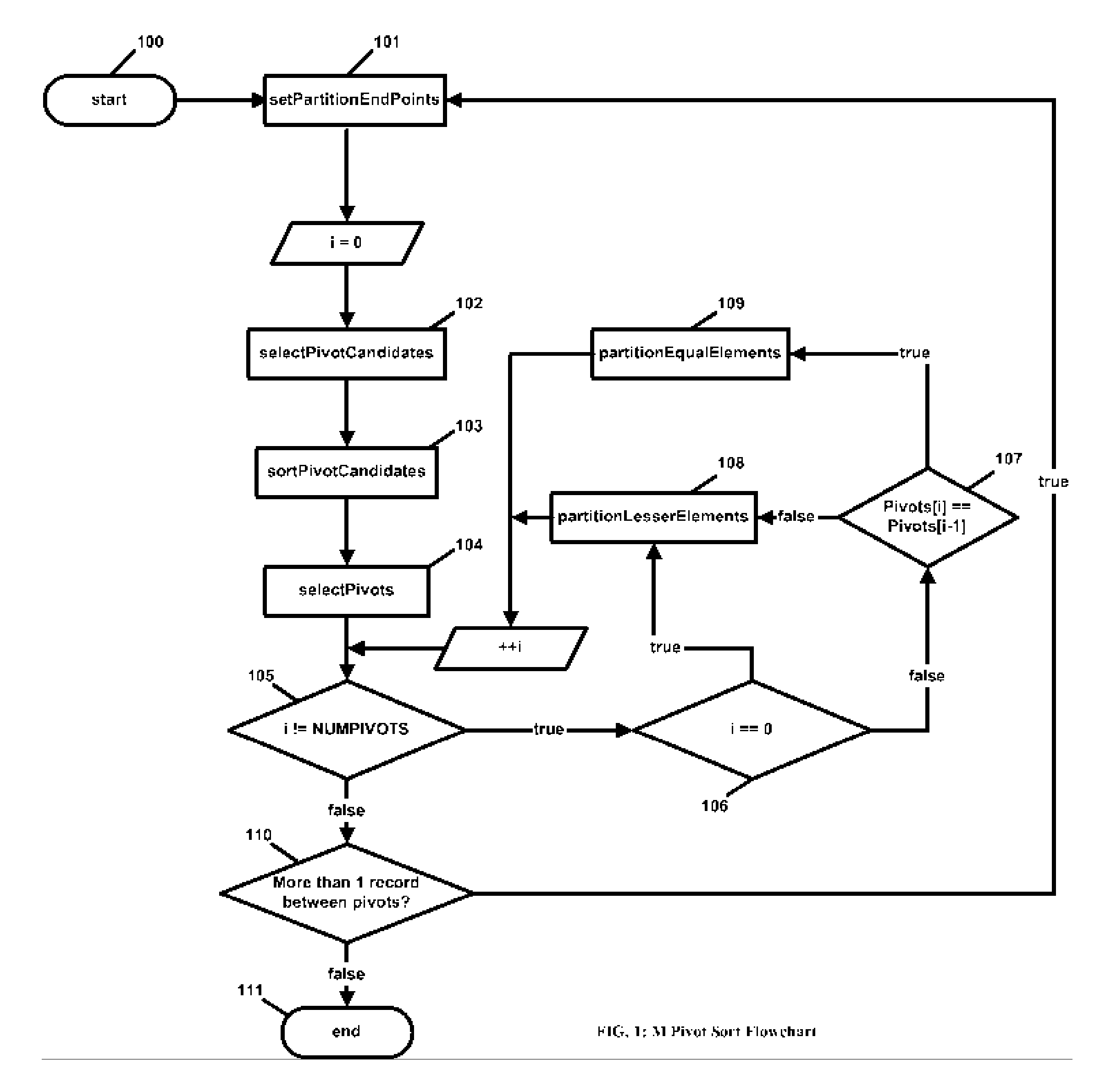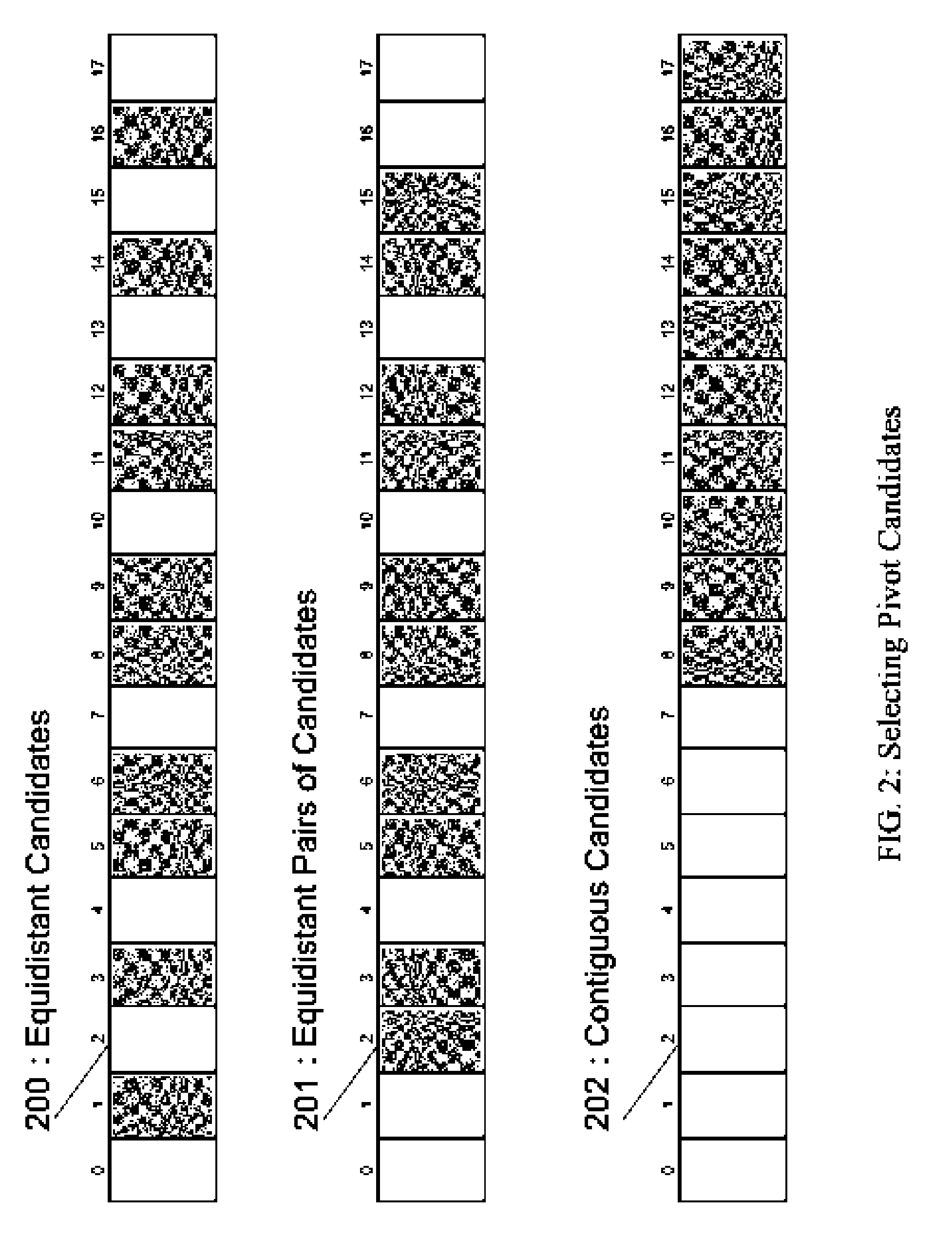Multiple Pivot Sorting Algorithm
a sorting algorithm and pivot technology, applied in the field of multi-pitch sorting algorithms, can solve the problems of no real, similar speed alternative, noticeably slower development of sorting algorithms, etc., and achieve the effect of quick on all data and easy handling of multiple duplicate records
- Summary
- Abstract
- Description
- Claims
- Application Information
AI Technical Summary
Benefits of technology
Problems solved by technology
Method used
Image
Examples
Embodiment Construction
[0014] Glossary
[0015] The following definitions may help illuminate the topics of discussion that follow.
[0016] Pivot candidate: A single record that has the potential to be a selected pivot. This is a new term proposed by the author and is specific to this invention. In relation to Quick Sort's Median-of-Three pivot selection routine, the three records that are compared to find a median could easily be termed pivot candidates, but no such distinction has been coined to the best of my knowledge.
[0017] Pivot or selected pivot: A special pivot candidate that has been selected to be a key in the partitioning phase.
[0018] Introduction
[0019] All figures and embodiments listed in this document concentrate on isolating pivot candidates at the end of the list for continuity and flow. This does not mean that the invention can not be implemented by placing candidates at the front of the list and partitioning around the later pivots first. Also, the pseudocode used in the Preferred Embodi...
PUM
 Login to View More
Login to View More Abstract
Description
Claims
Application Information
 Login to View More
Login to View More - R&D
- Intellectual Property
- Life Sciences
- Materials
- Tech Scout
- Unparalleled Data Quality
- Higher Quality Content
- 60% Fewer Hallucinations
Browse by: Latest US Patents, China's latest patents, Technical Efficacy Thesaurus, Application Domain, Technology Topic, Popular Technical Reports.
© 2025 PatSnap. All rights reserved.Legal|Privacy policy|Modern Slavery Act Transparency Statement|Sitemap|About US| Contact US: help@patsnap.com



